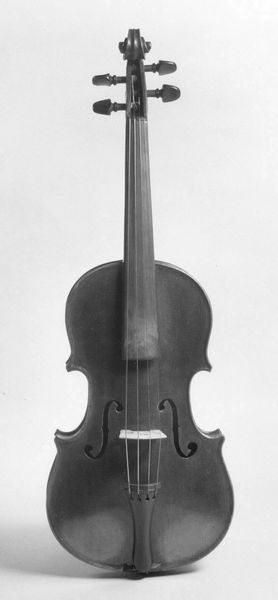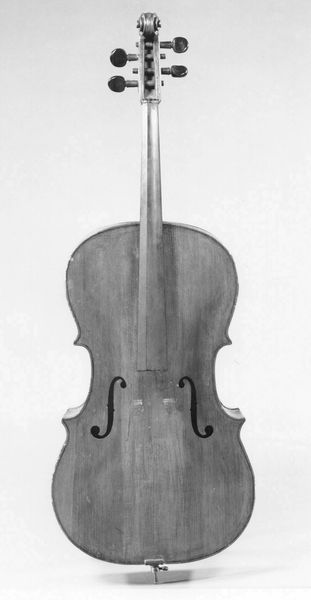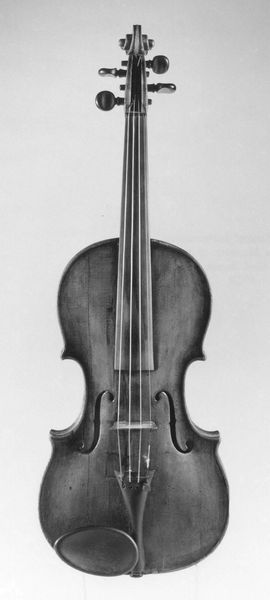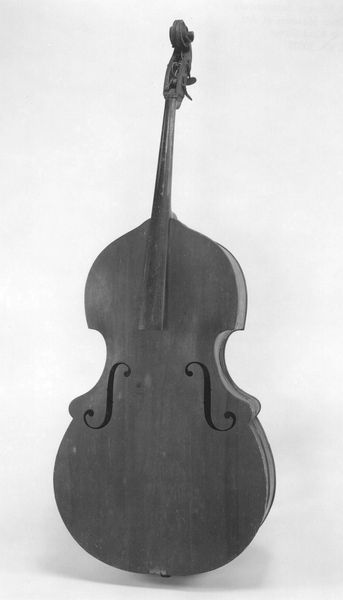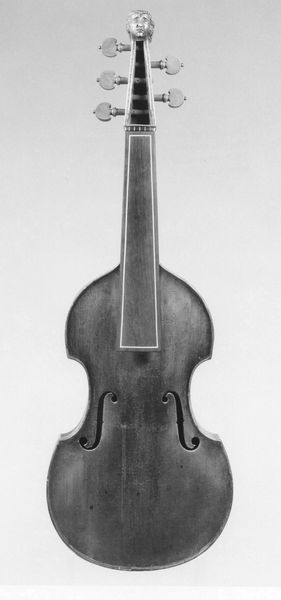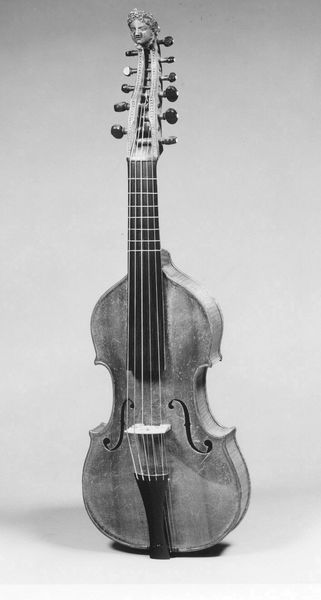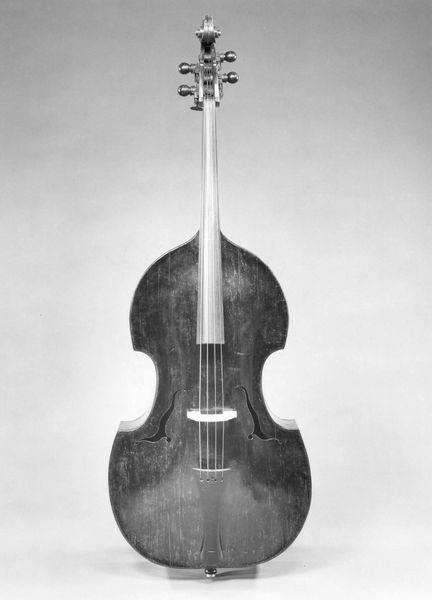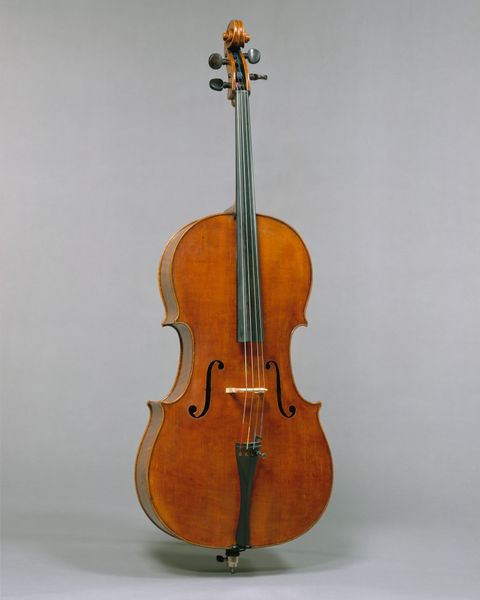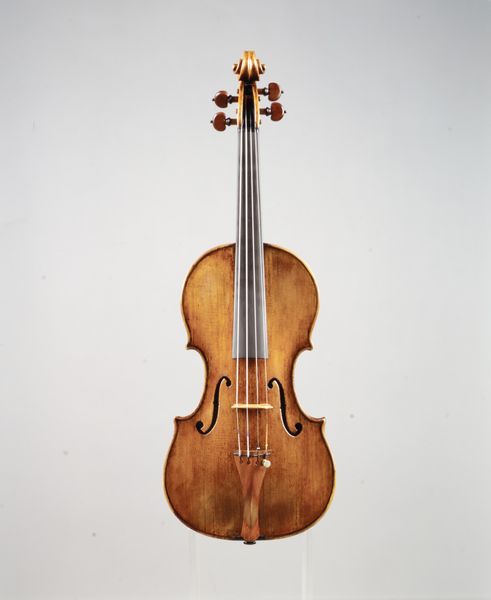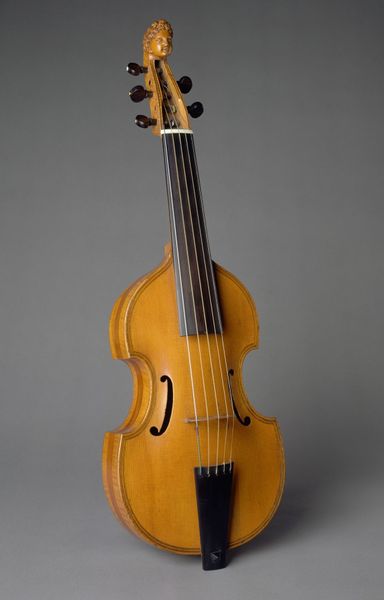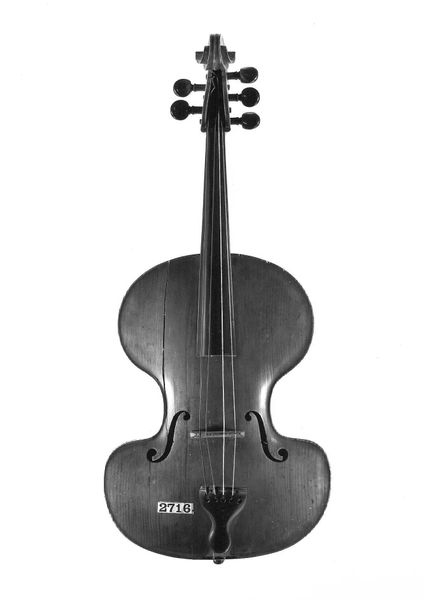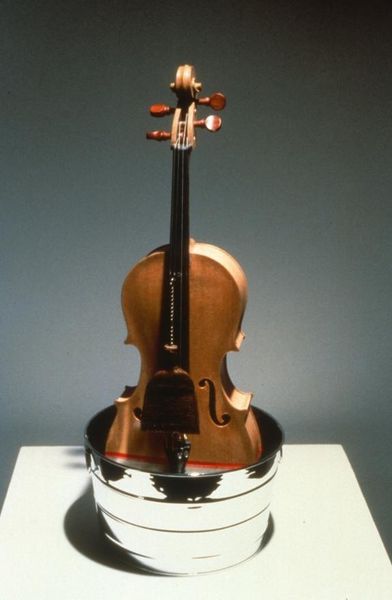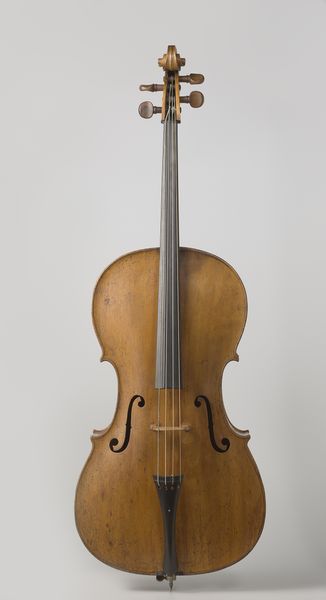
drawing, graphite, wood
#
drawing
#
sculpture
#
charcoal drawing
#
france
#
graphite
#
wood
#
musical-instrument
#
charcoal
#
graphite
Dimensions: 89.4.491 a: Body length: 1125/1120 cm (top/back) (442.9/440.9 in.); Upper bouts: 530/520 cm (208.66/204.72 in.): Center bouts: 357/348 cm (140.55/137.01in.); Lower bouts: 658/645 cm (259.1/253.9in.); Rib heights: 156/200/197 cm (upper/center/tail) (61.4/78.7/77.6 in.); Max. Ht. arching 256 cm (100.8 in.); String length 1070 cm (421.26 in.)
Copyright: Public Domain
Curator: This is Charles Plumerel’s drawing, "Double Bass and Bow," likely created sometime between 1733 and 1800. It's rendered primarily in graphite and charcoal, capturing the instrument in remarkable detail. Editor: The somber grayscale lends it such gravitas, doesn’t it? It feels more like a monument than a mere musical instrument study. There’s a weighty stillness about it. Curator: Absolutely. The scale of the instrument in relation to the page—and, we can presume, the viewer— speaks to its cultural significance in the late 18th century. Plumerel isn’t just depicting a double bass; he's immortalizing its presence within the social fabric of French musical life. Editor: Considering the era, I'm immediately thinking about access. Who had the privilege to commission or even appreciate an artwork like this? Was it destined for a salon, part of some pedagogical exercise, or even a personal vanity project celebrating musical skill and status? The absence of color, too, adds another layer. It speaks, perhaps, to constraints but also suggests a focus on form. Curator: It speaks volumes about the patronage systems in place at the time. Artists relied on wealthy individuals or institutions. The meticulous detail, the almost photographic realism achieved through charcoal and graphite, speaks to a sophisticated artistic culture—but one inherently limited to a certain societal stratum. Think about how this artwork functions to celebrate French identity and the prestige afforded musical proficiency. Editor: It begs a conversation on who’s voices were amplified—or silenced— within artistic movements. Who got to play, who got represented, and whose stories got ignored. A "simple" drawing opens up questions about power structures and social hierarchies reflected within creative spaces even back then. Even now, access and representation within the art world continue to be fraught. Curator: Exactly. Looking at this drawing, it’s a visual reminder of the selective narratives promoted through art and culture. A testament to both artistic skill and the sociopolitical realities of its time. Editor: I appreciate the historical layering here. It helps to keep in perspective what progress has (and has not) occurred since then regarding social equity within arts and culture.
Comments
No comments
Be the first to comment and join the conversation on the ultimate creative platform.
